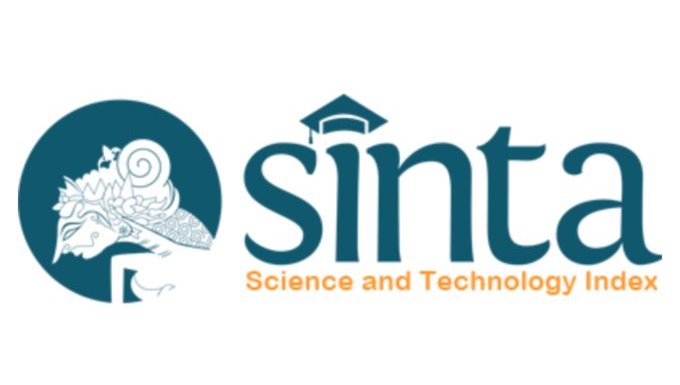Successful Non-Operative Management of Idiopathic Acute Limb Ischemia in a Pediatric Patient
Case Report
DOI:
https://doi.org/10.55175/cdk.v52i10.1519Keywords:
Acute limb ischemia, case report, non-operative treatment, pediatricAbstract
Introduction: Acute limb ischemia (ALI) is a rare occurrence in children, predominantly associated with trauma or iatrogenic causes. Acute limb ischemia can result in the loss of limbs and lifelong complications. The ideal treatment is not yet established. Case: A 10-month-old boy was referred with darkening of the extremities, accompanied by fever and seizures. The patient had a continuous fever for the past four days and experienced four generalized seizures, 1-2 minutes each. During treatment at the previous hospital, the nose and fingers of all extremities became dark blue since one day before referral. Upon arrival, examination revealed bluish-purple extremities, a harder texture, and cold acral areas. Pulses in the extremities were weak. Complete laboratory tests showed D-dimer >20,000 ng/mL, CRP 21.6 mg/dL. Head MRI was within normal limits. Doppler ultrasound of the extremities did not reveal thrombosis in the leg veins, and echocardiography also did not show the presence of thrombus. The patient was treated with antibiotics and anticoagulants for 10 days. During hospitalization, the patient showed clinical and laboratory improvement. Discussion: Acute limb ischemia in pediatric patients is uncommon, typically associated with trauma or iatrogenic factors. In this pediatric case, the etiology of acute limb ischemia (ALI) remained unclear, as no embolic source or thrombotic occlusion was detected on Doppler ultrasound or echocardiography. This highlights the limitation of the initial diagnostic work-up, since advanced imaging such as CT angiography would be required to further delineate potential underlying vascular abnormalities or occult causes that might not be evident on standard modalities.
Downloads
References
Hess CN, Huang Z, Patel MR, Baumgartner I, Berger JS, Blomster JI, et al. Acute limb ischemia in peripheral artery disease. Circulation. 2019;140:556–
doi: 10.1161/CIRCULATIONAHA.119.039773.
Kayssi A, Shaikh F, Roche-Nagle G, Brandao LR, Williams SA, Rubin BB. Management of acute limb ischemia in the pediatric population. J Vasc Surg. 2014;60(1):106-10. doi: 10.1016/j.jvs.2014.01.051.
Cerbu S, Birsasteanu F, Heredea ER, Iacob D, Iacob ER, Stanciulescu MC, Boia ES. Acute limb ischemia in neonates: etiology and morphological findings – short literature review. Rom J Morphol Embryol. 2018;59(4):1041–4. PMID: 30845282.
Dominguez M, Sise MJ. Acute limb ischemia. Medbullets Step 2/3 [Internet]. 2021. Available from: https://step2.medbullets.com/ cardiovascular/422862/acute-limb-ischemia?section=bullets.
Shaniv D, Simpson-Lavy Y, Shporen CH. Management of iatrogenic acute limb ischaemia in the neonate. BMJ Case Rep. 2024;17(9):e261775. doi: 10.1136/bcr-2024-261775.
Bsat A, Lawandos L, Nabhani S, Hafez B, Haddad F. Challenges in treating neonatal acute limb ischemia: conservative management with successful limb salvage. Case Rep Vasc Med. 2025;2025:2424543. doi: 10.1155/crvm/2424543.
Praditukrit A, Wongwaitaweewong K, Sangsupawanich P, Roymanee S, Jarutach J, Buntharikpornpun R, et al. Development of a Pediatric Vascular Catheterization Complication Score (Ped-VCCScore) for predicting post-cardiac catheterization complications. PLoS One. 2025;20(6):e0325044. doi:10.1371/journal.pone.0325044.
Arshad A, McCarthy MJ. Management of limb ischaemia in the neonate and infant. Eur J Vasc Endovasc Surg. 2009;38(1):61–5. doi: 10.1016/j. ejvs.2009.03.010.
Marra P, Di Fazio B, Dulcetta L, Carbone FS, Muglia R, Bonaffini PA, et al. Embolization in pediatric patients: a comprehensive review of indications, procedures, and clinical outcomes. J Clin Med. 2022;11(22):6626. doi:10.3390/jcm11226626.
Salimi J, Ahrabi A. Iatrogenic vascular trauma of the extremities in pediatric patients: a case series report and review of literature. SAGE Open Med Case Rep. 2025; 13:2050313X251347827. doi:10.1177/2050313X251347827.
UpToDate. Clinical features and diagnosis of acute arterial occlusion in the lower extremity ischemia [Internet]. 2024 [cited 2024 Jul 30]. Available from: http://112.2.34.14:9095/contents/clinical-features-and-diagnosis-of-acute-arterial-occlusion-of-the-lower-extremities.
Olinic DM, Stanek A, Tataru DA, Homorodean C, Olinic M. acute limb ischemia: an update on diagnosis and management. J Clin Med. 2019;8(8):1215. doi: 10.3390/jcm8081215.
Al Hinai M, Al Kindi I, Stephen E, Al Wahaibi K. Pediatric limb ischemia: our experience from a tertiary hospital in Oman. Indian J Vasc Endovasc Surg. 2024;11(3):189–93. doi: 10.4103/ijves.ijves_34_24.
Lim S, Javorski MJ, Halandras PM, Kuo PC, Aulivola B, Crisostomo P. Epidemiology, treatment, and outcomes of acute limb ischemia in the pediatric population. J Vasc Surg. 2018;68(1):182-8. doi: 10.1016/j.jvs.2017.08.069.
Natarajan B, Patel P, Mukherjee A. Acute lower limb ischemia—etiology, pathology, and management. Int J Angiol. 2020;29(3):168-74. doi:10.1055/s-0040-1713769.
Baril DT, Ghosh K, Rosen AB. Trends in the incidence, treatment, and outcomes of acute lower extremity ischemia in the United States Medicare population. J Vasc Surg. 2014;60(3):669–77.e2. doi: 10.1016/j.jvs.2014.03.244.
Bjorck M, Earnshaw JJ, Acosta S, Goncalves FB, Cochennec F, Debus ES, et al. Editor’s choice: European Society for Vascular Surgery (ESVS) 2020 clinical practice guidelines on the management of acute limb ischaemia. Eur J Vasc Endovasc Surg. 2020;59(2):173–218. doi: 10.1016/j. ejvs.2019.09.006.
Misra S, Shishehbor MH, Takahashi EA, Aronow HD, Brewster LP, Bunte MC, et al. Perfusion assessment in critical limb ischemia: principles for understanding and the development of evidence and evaluation of devices — a scientific statement from the American Heart Association. Circulation. 2019;140(12):e657-72. doi: 10.1161/CIR.0000000000000708.
Poursina O, Elizondo-Adamchik H, Montero-Baker M, Pallister ZS, Mills Sr JL, Chung J. Safety and efficacy of an endovascular-first approach to acute limb ischemia. J Vasc Surg. 2021;73(5):1741–9. doi: 10.1016/j.jvs.2020.10.002.
Bath J, Kim RJ, Dombrovskiy VY, Vogel TR. Contemporary trends and outcomes of thrombolytic therapy for acute lower extremity ischemia. Vascular. 2019;27(1):71–7. doi: 10.1177/1708538118797782.
Kliegman RM, Stanton BF, St Geme JW, Schor NF. Nelson Textbook of Pediatrics. 20th ed. Philadelphia, PA: Elsevier, 2016. p.1189
Doe J. Vascular disorders in children. In: Smith A, Brown B, eds. Pediatric Surgery. 7th ed. Philadelphia, PA: Elsevier, 2012. p.234-45.
Sanches SMV, Aquino MA, Leite BL, Cerqueira MMBF. Conservative treatment of acute limb ischemia in a child – case report. J Vasc Bras. 2022;21:e20220010. https://doi.org/10.1590/1677-5449.202200102.
Downloads
Published
How to Cite
Issue
Section
License
Copyright (c) 2025 Charolina Margaretha, Rachmanto Heryawan, Nusarintowati, Yehezkiel Nathanael

This work is licensed under a Creative Commons Attribution-NonCommercial 4.0 International License.





















